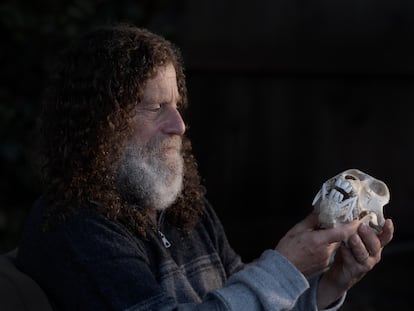Why scientists are making transparent wood
Stronger than plastic and tougher than glass, the resin-filled material is being exploited for smartphone screens, insulated windows and more
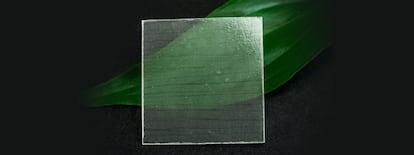
Thirty years ago, a botanist in Germany had a simple wish: to see the inner workings of woody plants without dissecting them. By bleaching away the pigments in plant cells, Siegfried Fink managed to create transparent wood, and he published his technique in a niche wood technology journal. The 1992 paper remained the last word on see-through wood for more than a decade, until a researcher named Lars Berglund stumbled across it.
Berglund was inspired by Fink’s discovery, but not for botanical reasons. The materials scientist, who works at KTH Royal Institute of Technology in Sweden, specializes in polymer composites and was interested in creating a more robust alternative to transparent plastic. And he wasn’t the only one interested in wood’s virtues. Across the ocean, researchers at the University of Maryland were busy on a related goal: harnessing the strength of wood for nontraditional purposes.
Now, after years of experiments, the research of these groups is starting to bear fruit. Transparent wood could soon find uses in super-strong screens for smartphones; in soft, glowing light fixtures; and even as structural features, such as color-changing windows.
“I truly believe this material has a promising future,” says Qiliang Fu, a wood nanotechnologist at Nanjing Forestry University in China who worked in Berglund’s lab as a graduate student.
Wood is made up of countless little vertical channels, like a tight bundle of straws bound together with glue. These tube-shaped cells transport water and nutrients throughout a tree, and when the tree is harvested and the moisture evaporates, pockets of air are left behind. To create see-through wood, scientists first need to modify or get rid of the glue, called lignin, that holds the cell bundles together and provides trunks and branches with most of their earthy brown hues. After bleaching lignin’s color away or otherwise removing it, a milky-white skeleton of hollow cells remains.
This skeleton is still opaque, because the cell walls bend light to a different degree than the air in the cell pockets does — a value called a refractive index. Filling the air pockets with a substance like epoxy resin that bends light to a similar degree to the cell walls renders the wood transparent.
The material the scientists worked with is thin — typically less than a millimeter to around a centimeter thick. But the cells create a sturdy honeycomb structure, and the tiny wood fibers are stronger than the best carbon fibers, says materials scientist Liangbing Hu, who leads the research group working on transparent wood at the University of Maryland in College Park. And with the resin added, transparent wood outperforms plastic and glass: in tests measuring how easily materials fracture or break under pressure, transparent wood came out around three times stronger than transparent plastics like Plexiglass and about 10 times tougher than glass.
“The results are amazing, that a piece of wood can be as strong as glass,” says Hu, who highlighted the features of transparent wood in the 2023 Annual Review of Materials Research.
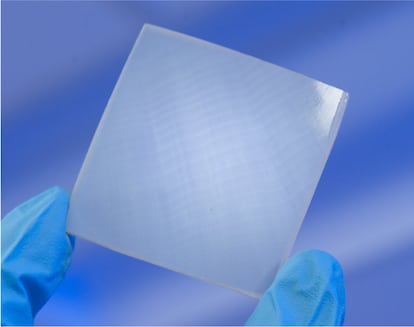
The process also works with thicker wood but the view through that substance is hazier because it scatters more light. In their original studies from 2016, Hu and Berglund both found that millimeter-thin sheets of the resin-filled wood skeletons let through 80 to 90% of light. As the thickness gets closer to a centimeter, light transmittance drops: Berglund’s group reported that 3.7-millimeter-thick wood — roughly two pennies thick — transmitted only 40% of light.
The slim profile and strength of the material means it could be a great alternative to products made from thin, easily shattered cuts of plastic or glass, such as display screens. The French company Woodoo, for example, uses a similar lignin-removing process in its wood screens, but leaves a bit of lignin to create a different color aesthetic. The company is tailoring its recyclable, touch-sensitive digital displays for products including car dashboards and advertising billboards.
But most research has centered on transparent wood as an architectural feature, with windows a particularly promising use, says Prodyut Dhar, a biochemical engineer at the Indian Institute of Technology Varanasi. Transparent wood is a far better insulator than glass, so it could help buildings retain heat or keep it out. Hu and colleagues have also used polyvinyl alcohol, or PVA — a polymer used in glue and food packaging — to infiltrate the wood skeletons, making transparent wood that conducts heat at a rate five times lower than that of glass, the team reported in 2019 in Advanced Functional Materials.
And researchers are coming up with other tweaks to increase wood’s ability to hold or release heat, which would be useful for energy-efficient buildings. Céline Montanari, a materials scientist at RISE Research Institutes of Sweden, and colleagues experimented with phase-change materials, which flip from storing to releasing heat when they change from solid to liquid, or vice-versa. By incorporating polyethylene glycol, for example, the scientists found that their wood could store heat when it was warm and release heat as it cooled, work they published in ACS Applied Materials and Interfaces In 2019.
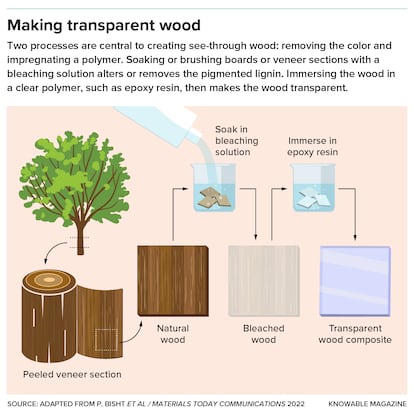
Transparent wood windows would therefore be stronger and aid in temperature control better than traditional glass, but the view through them would be hazy, more similar to frosted glass than a regular window. However, the haziness could be an advantage if users want diffuse light: Since thicker wood is strong, it could be a partially load-bearing light source, Berglund says, potentially acting as a ceiling that provides soft, ambient light to a room.
Hu and Berglund have continued to toy with ways to bestow new properties on transparent wood. Around five years ago, Berglund and colleagues at KTH and Georgia Institute of Technology found they could mimic smart windows, which can switch from transparent to tinted to block visibility or the Sun’s rays. The researchers sandwiched an electrochromic polymer — a substance that can change color with electricity — between layers of transparent wood coated with an electrode polymer to conduct electricity. This created a pane of wood that changes from clear to magenta when users run a small electrical current through it.
More recently, the two groups have shifted their attention to improving the sustainability of transparent wood production. For example, the resin used to fill the wood scaffolding is typically a petroleum-derived plastic product, so it’s better to avoid using it, Montanari says. As a replacement, she and colleagues invented a fully bio-based polymer, derived from citrus peels. The team first combined acrylic acid and limonene, a chemical extracted from lemon and orange rinds that’s found in essential oils. Then they impregnated delignified wood with it. Even with a fruity filling, the bio-based transparent wood maintained its mechanical and optical properties, withstanding around 30 megapascals of pressure more than regular wood and transmitting around 90 percent of light, the researchers reported in 2021 in Advanced Science.
Hu’s lab, meanwhile, recently reported in Science Advances a greener lignin-bleaching method that leans on hydrogen peroxide and UV radiation, further reducing the energy demands of production. The team brushed wood slices ranging from about 0.5 to 3.5 millimeters in thickness with hydrogen peroxide, then left them in front of UV lamps to mimic the Sun’s rays. The UV bleached away the pigment-containing parts of lignin but left the structural parts intact, thus helping to retain more strength in the wood.
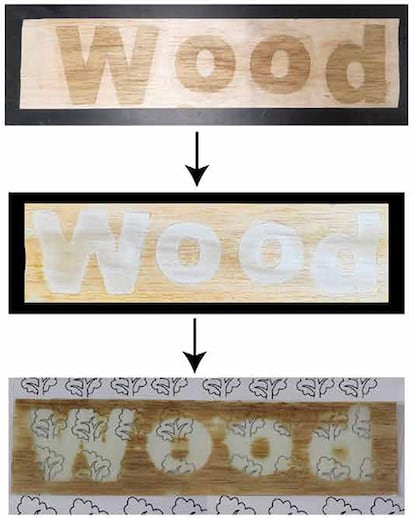
These more environmentally friendly approaches help limit the amount of toxic chemicals and fossil-based polymers used in production, but for now, glass still has lower end-of-life environmental impacts than transparent wood, according to an analysis by Dhar and colleagues in Science of the Total Environment. Embracing greener production schemes and scaling up manufacturing are two steps necessary to add transparent wood to mainstream markets, researchers say, but it will take time. However, they are confident it can be done and believe in its potential as a sustainable material.
“When you’re trying to achieve sustainability, you don’t only want to match the properties of fossil-based materials,” Montanari says. “As a scientist, I want to surpass this.”
This article originally appeared in Knowable Magazine, a non-profit publication dedicated to making scientific knowledge available to everyone.
Jude Coleman is an Oregon-based freelance journalist who covers ecology, climate change and the environment. Read more of her work at judecoleman.com.
Sign up for our weekly newsletter to get more English-language news coverage from EL PAÍS USA Edition
Tu suscripción se está usando en otro dispositivo
¿Quieres añadir otro usuario a tu suscripción?
Si continúas leyendo en este dispositivo, no se podrá leer en el otro.
FlechaTu suscripción se está usando en otro dispositivo y solo puedes acceder a EL PAÍS desde un dispositivo a la vez.
Si quieres compartir tu cuenta, cambia tu suscripción a la modalidad Premium, así podrás añadir otro usuario. Cada uno accederá con su propia cuenta de email, lo que os permitirá personalizar vuestra experiencia en EL PAÍS.
¿Tienes una suscripción de empresa? Accede aquí para contratar más cuentas.
En el caso de no saber quién está usando tu cuenta, te recomendamos cambiar tu contraseña aquí.
Si decides continuar compartiendo tu cuenta, este mensaje se mostrará en tu dispositivo y en el de la otra persona que está usando tu cuenta de forma indefinida, afectando a tu experiencia de lectura. Puedes consultar aquí los términos y condiciones de la suscripción digital.
More information
Últimas noticias
EU’s prestige at stake with proposal to fund Ukrainian war effort with Russian assets
Mustafa Suleyman: ‘Controlling AI is the challenge of our time’
Venezuela breaks energy agreements with Trinidad and Tobago due to alleged complicity with the US
The murder of Michele and Rob Reiner: A tale of horrific days in Hollywood
Most viewed
- ‘El Limones’ and the growing union disguise of Mexican organized crime
- Christian Louboutin: ‘Young people don’t want to be like their parents. And if their parents wear sneakers, they’re going to look for something else’
- ‘We are dying’: Cuba sinks into a health crisis amid medicine shortages and misdiagnosis
- A mountaineer, accused of manslaughter for the death of his partner during a climb: He silenced his phone and refused a helicopter rescue
- The low-cost creative revolution: How technology is making art accessible to everyone
